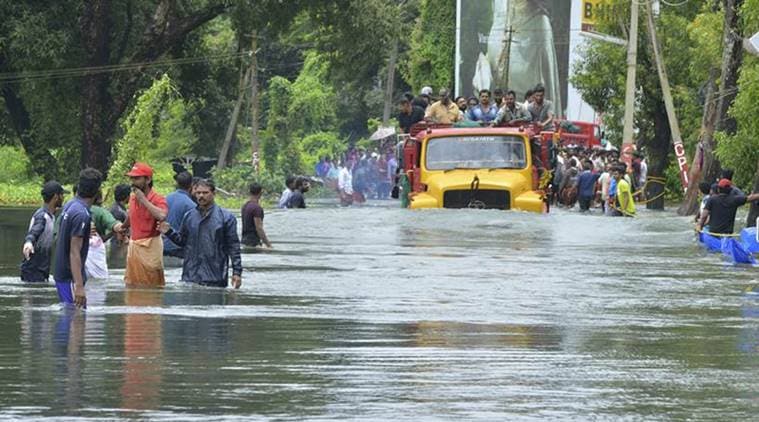 The report identified several points of governmental failure that ostensibly contributed to the devastating magnitude of the flood and its consequent destruction. (File)
The report identified several points of governmental failure that ostensibly contributed to the devastating magnitude of the flood and its consequent destruction. (File)
A report prepared on this year’s Kerala floods by an investigating committee from Jawaharlal Nehru University’s Special Centre for Disaster Research, in collaboration with the National Institute for Disaster Management, identified several points of governmental failure that ostensibly contributed to the devastating magnitude of the flood and its consequent destruction.
The team, comprising four research scholars from the department, including the centre’s chairperson Dr Amita Singh, visited four of the worst affected districts – Alappuzha, Idukki, Kottayam and Pathanamthitta – which together cover 20 talukas. According to Singh, her research in the area began in September 2015, and even then “…the death knell had already been sounded, with widespread erosion and fragile land being acquired by builders”.
The committee’s report found that although the Kerala State Disaster Management Authority (KSDMA) had been constituted in 2007, as mandated by the Disaster Management Act, 2005, it came up with only one disaster management plan in 2013, which was only approved by the chief minister and had already become redundant. The report stated, “The plan was to be updated every year but with zonation maps, landslides assessments and other estimated impact studies on risks made in 2010, the plan is outdated.”
The report states that as a result of this, vulnerability mapping was outdated and preparedness and participatory dissemination were missing. The other major point the report flags is the lapses in dam management and late release of water from dams despite repeated warnings from the India Meteorological Department (IMD) about above-normal rainfall over the “extreme south peninsula” between August 9 and 15.
The report stated, “The dam safety authority during its press brief on August 7 defied any plan to open the dams and exactly one week later, when the rainfall was at its highest and people were already facing a highly water saturated ground, the authorities opened all 38 big dams in Kerala together”. By this time, the study found, Idukki dam — the state’s largest – had already reached its maximum capacity of 2403 square metres.
The report mentions that while the state government held three meetings with panchayat pramukhs in Idukki between July 18 and August 10, the pramukhs stated that the officials were unresponsive to their repeated demands for floodgates to be opened earlier, and also opened gradually. They reported that KSDMA never held workshops with them, and that early warnings were not issued.
The report also flagged that Fragile Land Act, 2003, was “dumped as outdated law which has lost its relevance” throwing open the Western Ghats for construction, while “river catchments, backwaters and estuaries providing mangroves…are subsequently eliminated”.